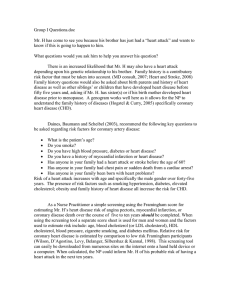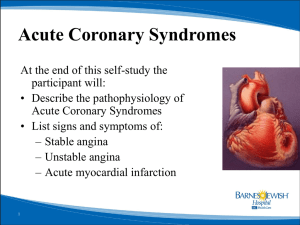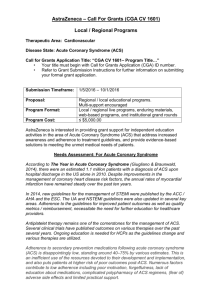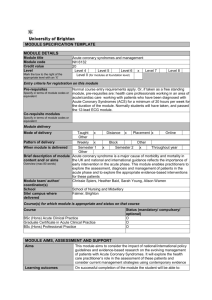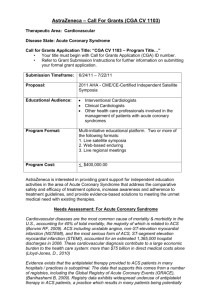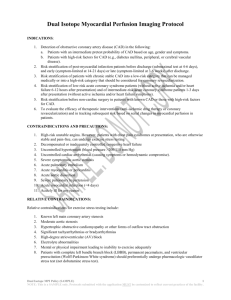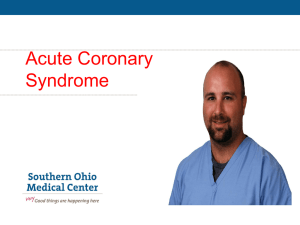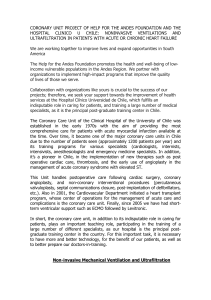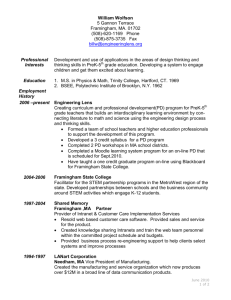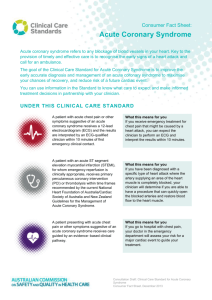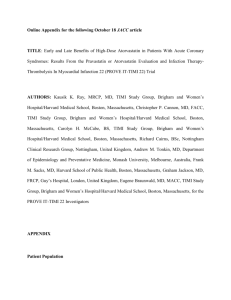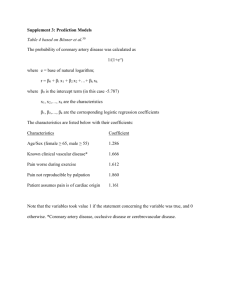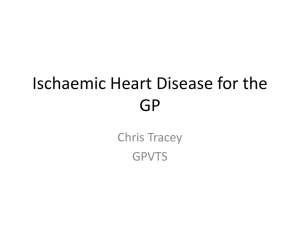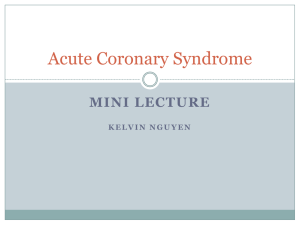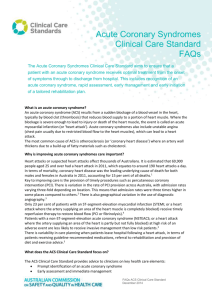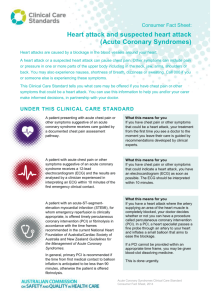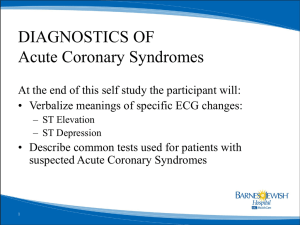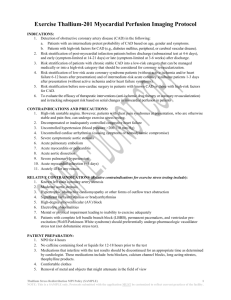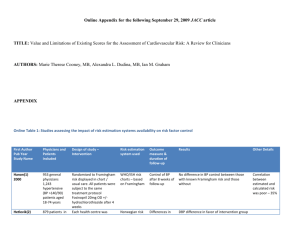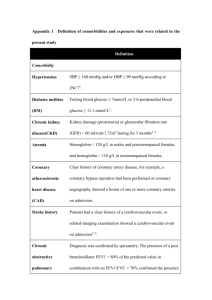Framingham Powerpoint
advertisement
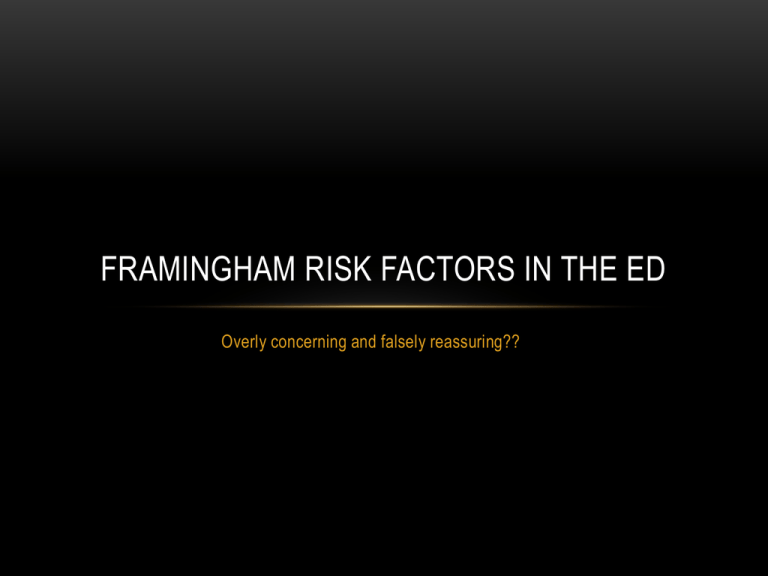
FRAMINGHAM RISK FACTORS IN THE ED Overly concerning and falsely reassuring?? THE FRAMINGHAM STUDY Framingham Heart Study aimed to identify risk factors that contributed to CVD The population that they studied was over 5000 patients and they ranged in age from 30-62. Further cohorts have been subsequently added to the studied population The Study has produced approximately 1,200 articles WHAT ARE THE RISK FACTORS • Age • Diabetes • Smoking • Raised Systolic Blood Pressure • Total cholesterol • HDL cholesterol • BMI (replacing lipids in a simpler model) WHAT DO THESE RISK FACTORS MEAN Can be used to prognosticate 10 year risk of developing IHD HOW ARE THEY USED IN ED? ? Innappropriately ? JAYES ET AL Prospective evaluation of > 1700 patients presenting to ED with symptoms suggestive of acute coronary ischaemia who were admitted to coronary care units 11% of patients were deemed to have acute ischaemic heart disease Published the results by way of relative risks JAYES ET AL Diabetes had a relative risk of 2.4 in men, 2.0 in women Family history of myocardial infarction a relative risk of 2.1 in men Smoking a relative risk of 1.5. in men (1.0-2.4) HAN ET AL Retrospective analysis of internet tracking registry of > 17,000 patients with possible ACS Primary outcome was acute coronary syndrome Nearly 11,000 patients enrolled Just over 8% had ACS HAN ET AL Risk factors < 40 years 40-65 >65 0 1 1 1 1 2.6 1.5 1.0 2 9.2 1.8 1.2 3 7.8 2.6 1.0 4 or 5 22.5 3.7 1.2 Adjusted Odds Ratios for ACS See paper for CI’s BODY ET AL A single centre prospective diagnostic cohort study Patients over 25 years of age with chest pain that the ED clinician suspected to be cardiac in origin The primary outcome was a diagnosis of AMI Just under 800 patients analysed and 18.6% of patient were positive for AMI BODY ET AL RESUSCITATION 2008 Number of risk factors LR+ LR- ≥1 1.1 0.6 ≥2 0.9 1.1 ≥3 0.8 1.1 ≥4 1.2 1.0 Presence of cardiac risk factors did not yield significant likelihood ratios for ACS IN SUMMARY Framingham Risk factors applied to the acute setting can lead to false elevation of risk in their presence, or false reassurance in their absence to the degree of risk of ACS REFERNECES The Framingham Heart Study Jayes R et al. Do patients' coronary risk factor reports predict acute cardiac ischemia in the emergency department. J Clin Epidemiol 1992;45: 621-626 Han et al., The Role of Cardiac Risk Factor Burden in Diagnosing Acute Coronary Syndromes in the Emergency Department Setting. Ann Emerg Med. 2007; 49 Body R et al. Do risk factors for chronic coronary heart disease help diagnose acute myocardial infarction in the Emergency Department? Resuscitation 2008 ;79 ,41 - 45
